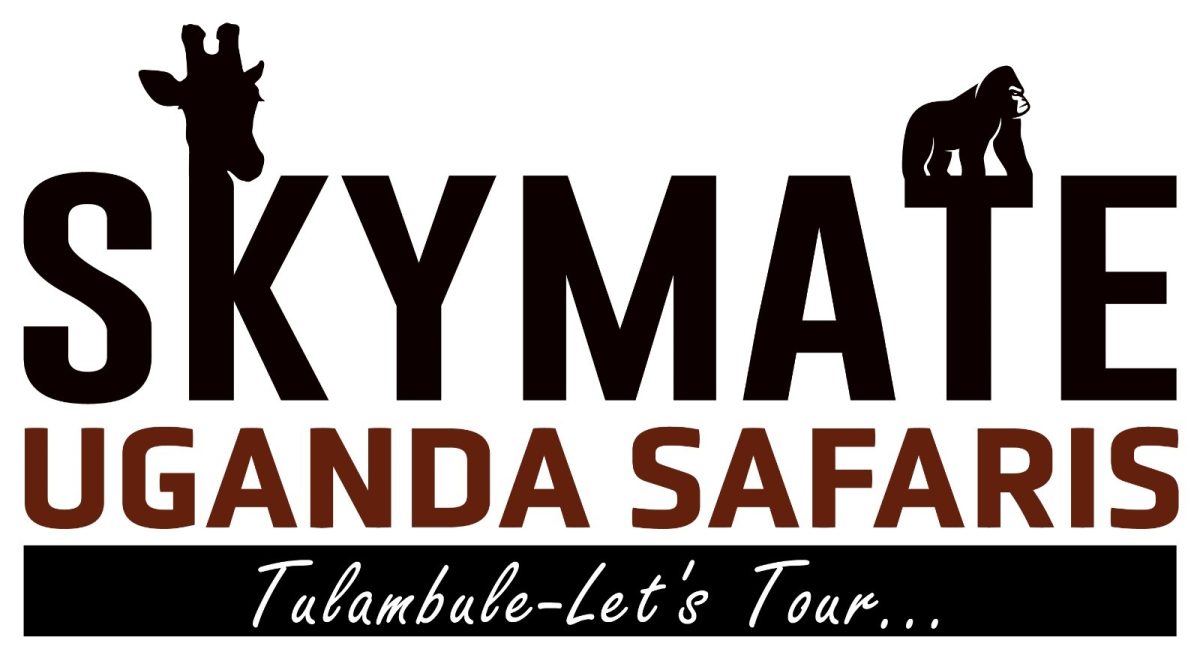The 1978km2 Queen Elizabeth National Park is the most popular destination for Uganda safaris. This is partly because of its proximity to the country’s gorilla trekking hubs, but also reflects its status as one of the most bio-diverse protected areas in East Africa.
Here you will find extensive freshwater lakes, dense papyrus swamps, swathes of tropical rain-forest, tracts of rolling savannah and brackish crater lakes nestled below the snow-capped Mountains of the Moons.
Queen Elizabeth National Park is home to nearly 100 mammal species, including four of the Big 5 animals, Chimps, and tree-climbing lions.
Bird-wise, it is booming. Though smaller than East Africa’s blockbuster safari destinations — Tanzania’s Serengeti or Kenya’s Masai Mara — Queen contains considerably more avian species: more than 600, in fact, a number that, according to BirdLife International, no protected area in Africa can beat.
A relaxed and accessible wildlife haven, it also has low-cost entry fees, friendly guides and an excellent mix of places to stay, ranging from budget accommodation to eco-luxury lodges. If you are fairly new to safari and have a budding interest in bird-watching and wildlife viewing, it’s the ideal choice.
History of Queen Elizabeth National Park
Queen Elizabeth National Park was founded in 1952 as Kazinga National Park.
It received its name in April 1954, to commemorate the young Queen Elizabeth’s first visit when Uganda was still under colonial rule.
Over the years, the park suffered what seems an unfair share of setbacks, particularly in the period following Idi Amin’s notorious 1971 coup.
During the distress and unrest that followed the installation of the brutal dictator, wildlife poaching was rife. Queen Elizabeth National Park, once magnificent, has been overshadowed by more fortunate East African safari areas ever since.
Gradually, however, under Uganda Wildlife Authority (UWA)’s careful stewardship, the green shoots of recovery have emerged.
An aerial survey completed in 2018 counted several thousand elephants, along with healthy numbers of herbivores; buffalos, hippos and Ugandan kob, handsome antelopes that are a crucial food source for lions.
The rangers in the park have also forged fresh links with the UK, skill-sharing with Queen Elizabeth Country Park in Hampshire and even creating a Ugandan Queens Park Rangers football team.
Queen Elizabeth National Park is a UN Biosphere Reserve
In the many wildlife parks and reserves settlements are banned, but Queen Elizabeth National Park is different.
The park is one of the living examples of man and biosphere reserves or conservation areas in the world where man harmoniously co-exists with wildlife.
When the national park was established in 1952, its dozen or so villages remained, their residents scratching a living by growing bananas, tending smallholdings and fishing for ngege (Nile tilapia, delicious grilled) or emamba, emale and semutundu (lungfish, mudfish and catfish). Overtime, the park’s population has grown.
Location of Queen Elizabeth National Park
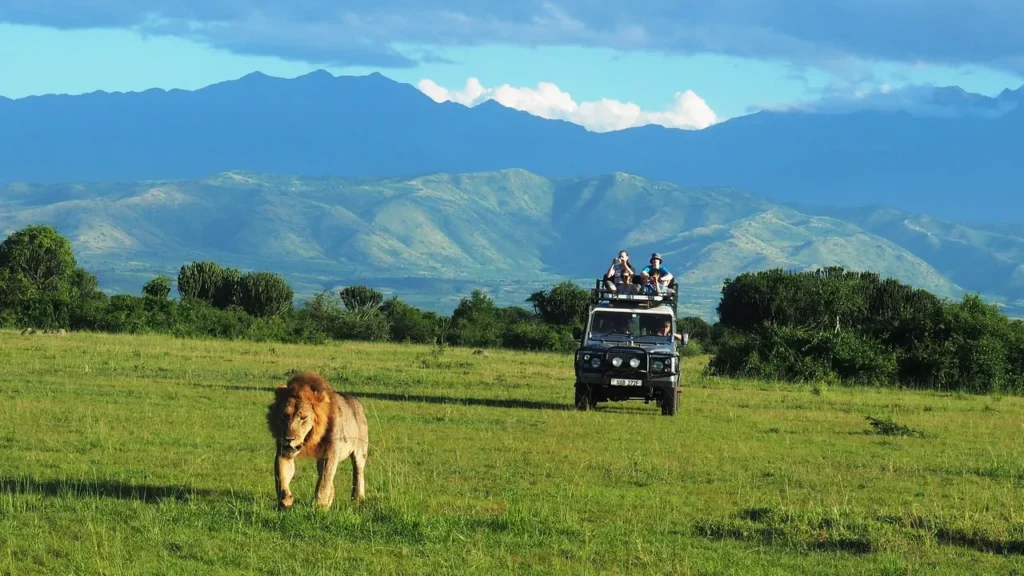
Queen Elizabeth National Park is located in southwestern Uganda.
The park is situated right on the equator, on the floor of East Africa’s Rift Valley, a geological wonder that stretches northwards from South Africa to Ethiopia.
The East African Rift Valley was formed approximately 30 million years ago by the pulling apart of two tectonic plates.
As the plates diverged, molten rock welled up from the mantle of the Earth, creating volcanoes and uplifting the landmass.
Over time, erosion carved into the uplifted plateaus, forming the picturesque landscapes we see in Queen Elizabeth National Park today.
Our Safaris to Queen Elizabeth National Park
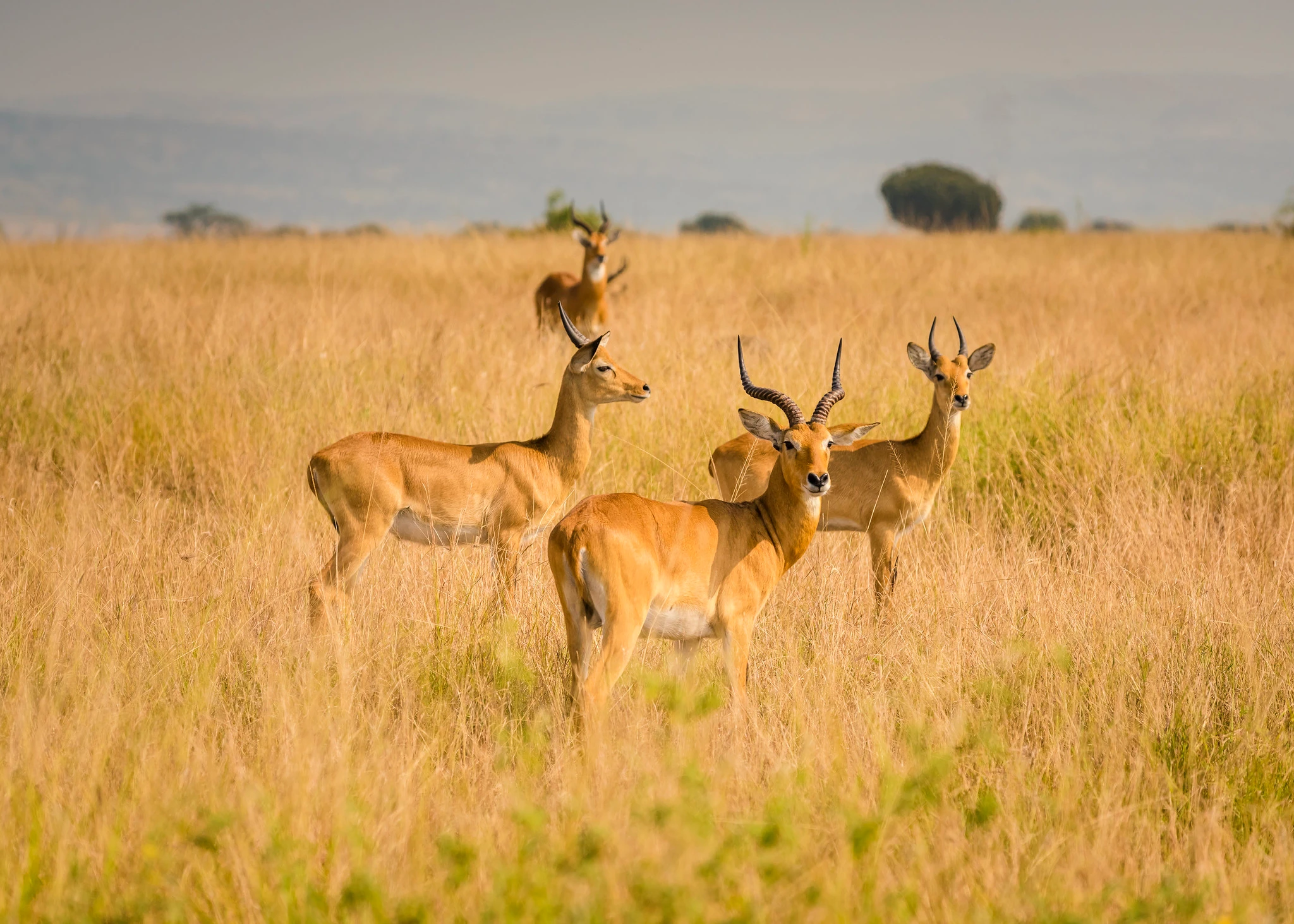
2 Day Queen Elizabeth Safari Package, Uganda
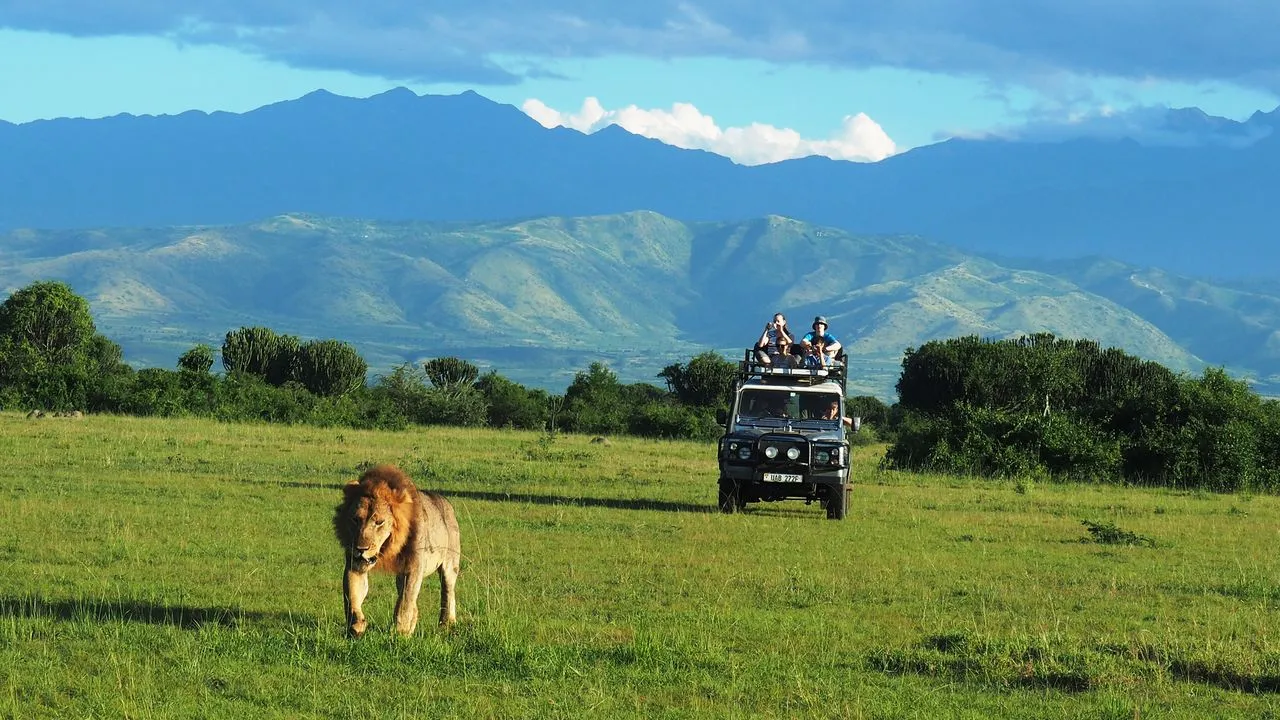
4 Days Safari In Beautiful Queen Elizabeth National Park
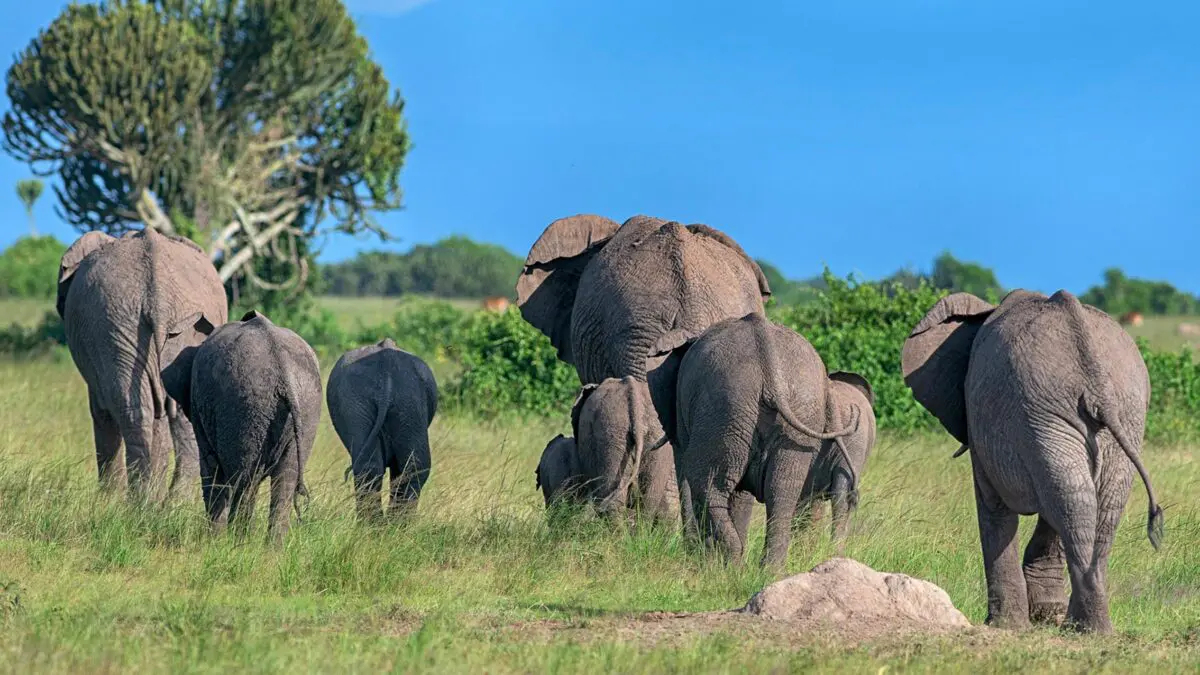
3 Day Queen Elizabeth National Park Safari In Uganda
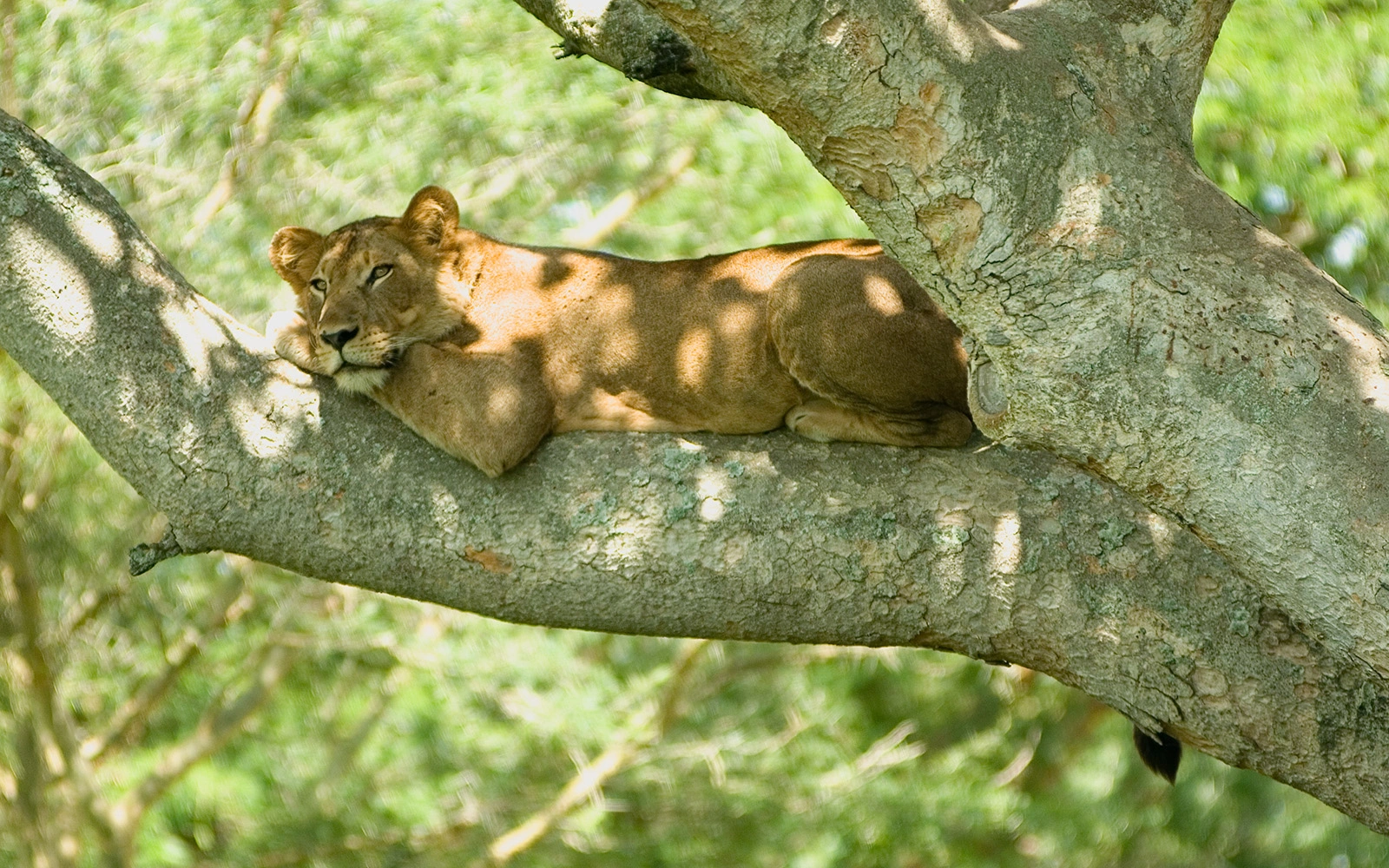
10 Days Uganda Wildlife Safari, gorillas, Chimps & Big Game
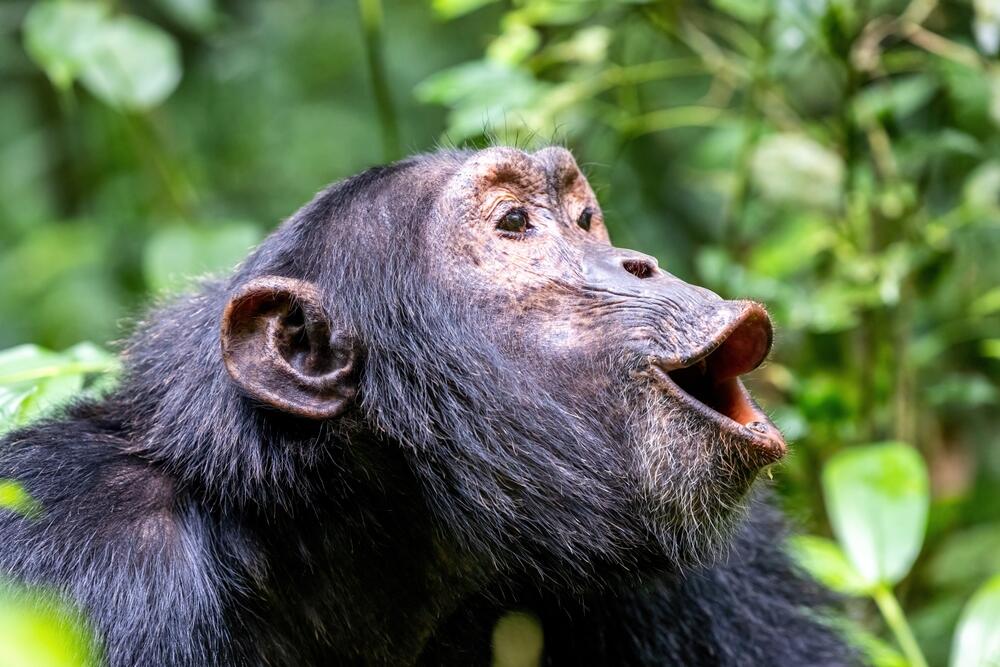
7-Day Uganda Wildlife Safari | Chimps, Gorillas, Big 5 & More!
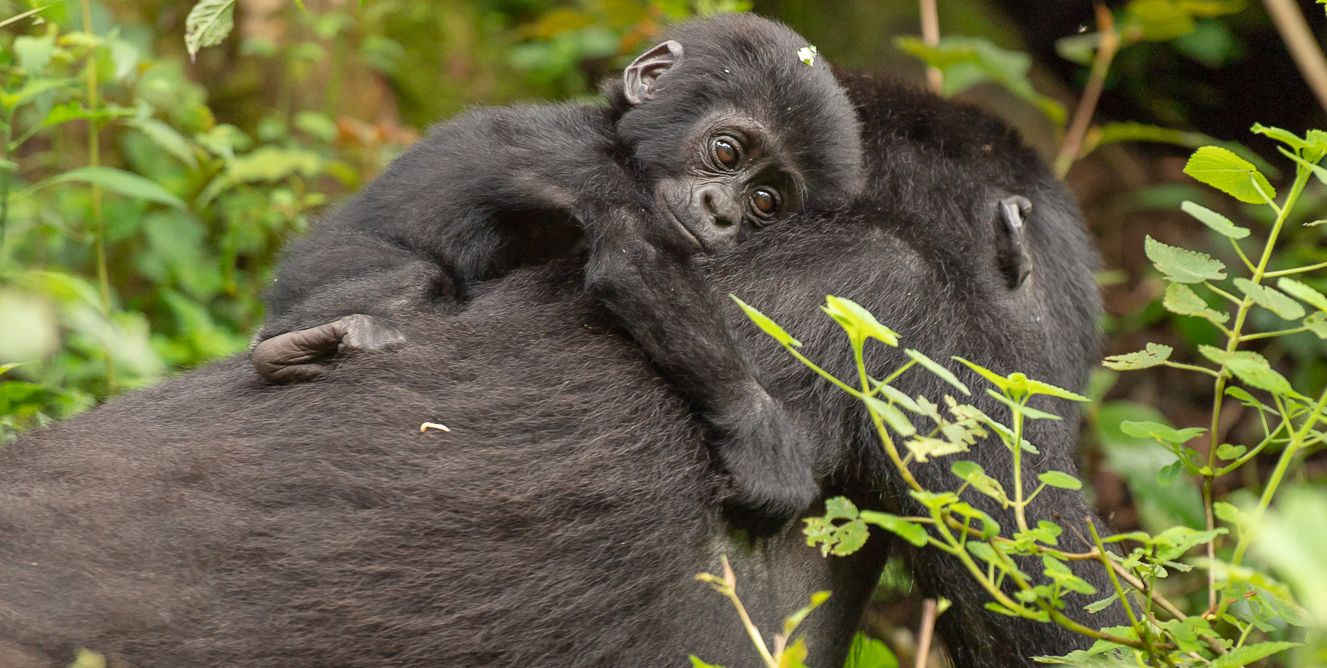
14 Days Uganda to Rwanda Safari: Primates & Wildlife
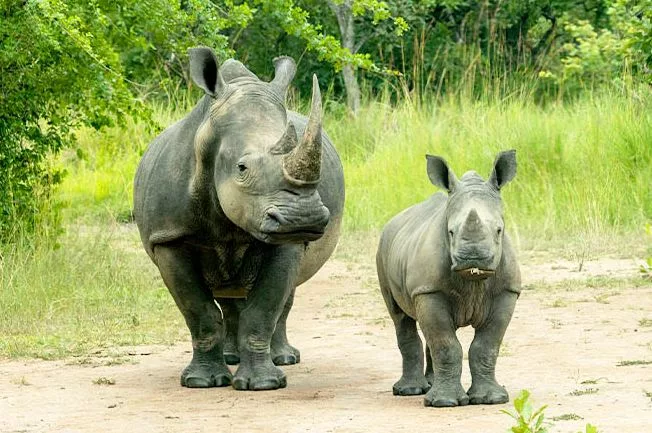
12 Days Uganda Safari, Big Five, Chimps, Gorillas And Culture
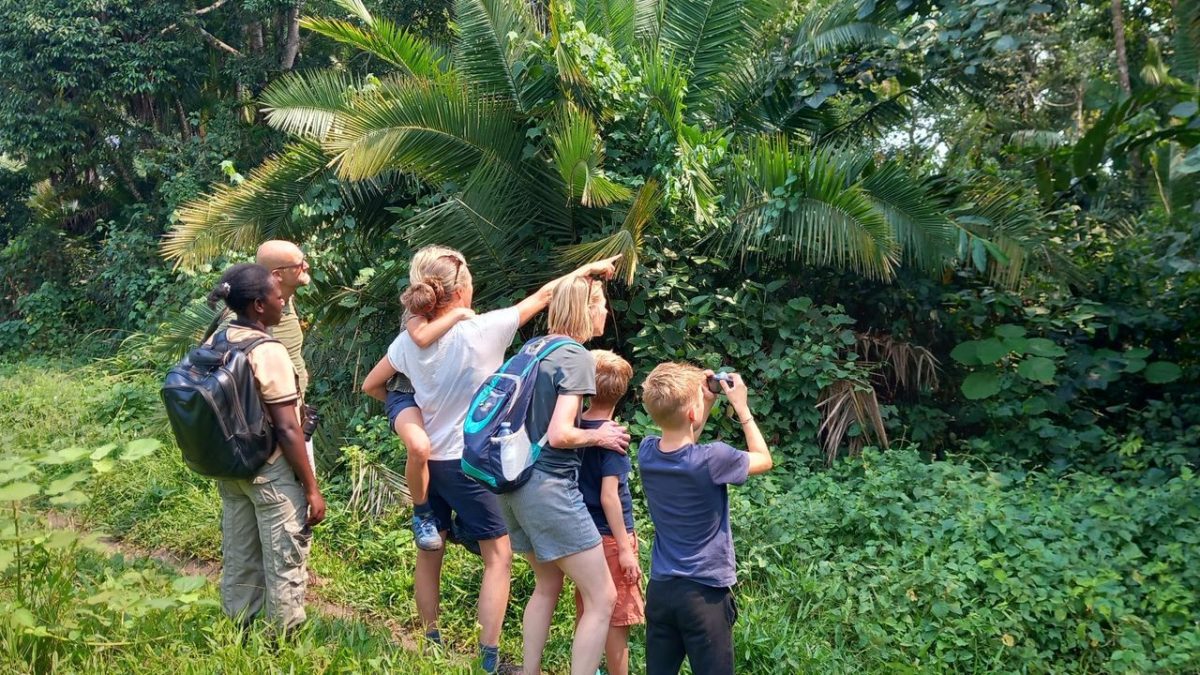
18 Days Uganda Family Safari Holiday
Animals in Queen Elizabeth National Park
Queen is home to almost 100 species of mammal, including 4 of the Big 5 (no rhinos).
It is the easiest place in Uganda to see lions, which quite often climb trees in the Ishasha sector but are more common on the Kasenyi Plains, where they feed on large herds of Uganda kob.
About 5000 hippos, 300 chimpanzees, 10000 African buffalos, 3900 African bush elephants, 200 African lions, 20000 Uganda kobs and a variety of antelopes also reside in the park.
Elephant, buffalo, hippo, waterbuck and crocodile are generally numerous along the Kazinga Channel, which can be explored on boat trips that also offer great bird watching and occasional sightings of leopard and giant forest hog.
There is also around 10 species of monkeys, including baboons, black and white colobus, red-tailed monkeys, Vervet monkeys, and blue monkeys.
Other Queen Elizabeth National Park animals include spotted hyenas, side striped jackals, mongoose, warthogs, bush pigs, and more.
Giraffe and zebra are absent.
The Famous Tree-Climbing Lions
Queen Elizabeth National Park is known for being home to lions that climb trees.
Now you be thinking that, as lions are cats, and cats like to climb trees, this is not so surprising – especially when you consider that another type of big cat, the African leopard, is a skilled tree climber.
In reality, lions are not usually particularly skilful tree climbers. Their imposing bulk puts them at the top of the predator hierarchy and imparts the power to pull down powerful prey. But they are not well designed for nimble balance or agile leaps.
While all lions can and occasionally do climb trees, it is very seldom that they make a habit of it. Only a very few specific populations, primarily here in Uganda’s Queen Elizabeth NP and in Tanzania’s Lake Manyara, climb trees more often. That is why these lions are called ‘tree-climbing lions’.
Scientists are not sure about the exact reason for this behaviour.
Some believed that it helps the lions escape the annoyance of biting insects while others suggest it offers vantage points for spotting prey, helps them keep an eye out for rival predators, or gives them a cooler resting place away from the sweltering heat on the ground.
In Queen Elizabeth National Park, the tree-climbing lions can be found in the Ishasha Sector in the south of the park.
Lions Vs Villagers – Conflicts in Queen Elizabeth National Park
Queen Elizabeth National Park is home to around 75 Africa lions. For park’s communities, however, these lions are a serious matter.
Despite the ecological benefits that apex predators offer, rural dwellers consider them threatening and object to the cats taking their cattle and respond by persecuting them or setting snares to poach their prey, sometimes catching them, too.
The Uganda Wildlife Authority has tried to stop this by giving 20% of the profits from tourism back to the communities, and by compensating any farmer whose cow is eaten by a lion.
This appeared to be working just fine, until 2018 when a horrifying eleven lions were poisoned by local people in revenge for killing their livestock.
The dead lions, eight of them cubs and the other three adult lionesses, were part of a pride that also included three males.
The carcasses and bones, discovered near a fishing village called Hamkungu, were sent to a regional town for testing. Experts suspect the lions were poisoned with alidcarb, an insecticide.
Hippos of Kazinga Channel
Kazinga Channel is squiggle of fresh water, roughly 22 miles long and 2,500ft wide. Though officially a river, its flow is almost invisible.
The channel connects two natural basins at a near-identical altitude — Lake Rutanzige (also known by its colonial name, Lake Edward) and Lake Katunguru (also called Lake George). It boasts the highest concentration of hippos in Africa.
These semi-aquatic giants, spend their days submerged in the cool water of the channel with only nostrils, eyes, and ears exposed, blinking in the abundant sunshine.
Periodically they duck back under the surface of water and then bobble back up again, blowing excess water from their nostrils and flicking it from their little pink ears.
Sometimes you can witness them squabbling or engaged in rough play with one another, mouths wide open to display their incredibly long canine teeth, and making quite a splash with their huge bodies.
The main reason hippos stay submerged in water during the day is because their vulnerable skin seems unable to stand the effects of the strong equatorial sun.
When night descends, these Uganda animals finally emerge from their water bed and graze by starlight under the cool relief of night. In spite of their bulky appearance; hippos are quite swift on the ground and can run faster than a human.
Hippos have been known to wander several miles from their pool while grazing, but by the time sunrise burns through the morning haze, these portly beasts will have taken refuge once again in their pool retreat.
Chimpanzees of Kyambura Gorge
Kyambura Gorge near Kazinga Channel is a crack of 11 kilometers long in the Earth’s crust inside Queen Elizabeth National Park.
This scenic gorge was named after Kyambura River which runs through its thick “underground rainforest”, 100 meters underneath the Kichwamba Escarpment.
The name Kyambura locally means as ‘it lost’. It was obtained as a result of the river shifting local members with their belongings and on return; they couldn’t find their colleagues anywhere.
Living within its beautiful underground rain-forest are many monkeys, butterflies, and birds. But, the gorge is best known for a isolated community of 30 wild chimpanzees that have become known as the “Lost Chimpanzees”.
Visit it and you may glimpse chimpanzee’s knuckle prints, or hear their screeches reverberating through the trees.
Birds In Queen Elizabeth National Park
Queen Elizabeth Park’s astonishing variety of habitats harbors more than 600 bird species. This is the second-highest of any park in Africa.
The lakes, rivers, and wetlands are home to a plethora of plovers, herons, storks, pelicans and egrets.
Other notable birds of Queen on your Uganda birding tours include:
- Flamingoes
- Great blue Turaco
- White-winged tern
- Gull-billed tern
- African skimmer
- Swamp flycatcher
- African crake
- Papyrus Gonolek
- Sooty chat
- Moustached grass warbler
- Black-headed Gonolek
- Red-chested sunbird
The Volcanic Landscape of Queen Elizabeth National Park
But Queen Elizabeth National Park is not just about the wildlife. One thing you also can’t fail to notice as you drive around the park are the stunning landscapes!
As I mentioned above, Queen Elizabeth National Park is located on the floor of the Africa’s Rift Valley, which was formed millions of years ago by tectonic activity.
This upheaval has now left behind an eye-bending array ancient explosion craters, craggy peaks and rolling lush hills that are a joy to discover.
Crater Lakes in Queen Elizabeth National Park
Scattered across Queen are over 40 volcanic scars, of which 28 hold sparkling crater lakes.
The largest crater area is called the Katwe craters trail, or Katwe-Kikorongo explosion craters. It is a volcanic field of around 209 square kilometers, pocked with ancient craters like the surface of the moon – except greener.
Each crater was formed individually by violent volcanic explosions over the last 1 million years.
There is no ancient lava flow here, which means the explosions were just violent bursts of hot gas and steam that erupted out of the ground like a bomb going off, leaving this ravaged surface.
The size of the individual craters varies, but the largest can be nearly two miles across and up to 100 metres deep.
Many of them have now evolved into saltwater lakes like Lake Nyamunuka but be warned whose water is highly acidic and stinks of sulphur.
Another crater lake to look out for is Katwe Salt Lake, which is so salty that the local community actually mine salt here.
Other craters to look out for in Queen Elizabeth National Park include:
- Kashaka Crater: Scenic beauty with diverse vegetation and panoramic vistas.
- Lake Kikorongo: Teeming with wildlife like buffalos, and elephants, and offering boat tours.
- Lake Munyanyange: Home to pink flamingos.
How To Get To Queen Elizabeth National Park?
There are several ways to reach Queen Elizabeth National Park; here are the main options:
By Air
Entebbe International Airport is the main international entry point to Uganda, situated approximately 40 kilometres south of Kampala. From Entebbe, you can take domestic flights to:
- Mweya airstrip: Located within Queen Elizabeth National Park itself, offering the most convenient air access (flight time: 1 hour).
- Kasese Airport: Situated near the national park’s southern entrance (flight time: 1 hour 15 minutes).
- Kihihi Airport: Serves the Ishasha sector in the southern part of the park and as well the nearby Bwindi Impenetrable National Park (flight time: 1 hour).
By Private Car
This is one of the best ways to get to Queen Elizabeth National Park during your safari in Uganda.
- From Kampala: The most common route is via Masaka -Mbarara road, covering approximately 420 kilometres (6-7 hours drive). On this route, you can enjoy scenic landscapes and stopovers at interesting spots like the Equator monument and Lake Mburo National Park.
- From Fort Portal: This option takes around 260 kilometers (4-5 hours drive) through the breathtaking foothills of the Rwenzori Mountains. Witness stunning views and diverse vegetation en route.
By Bus
- Buses: Many companies offer bus services from Kampala to Mbarara or Kasese, with connections to the park entrance gates. While very budget-friendly, expect longer travel times and potential delays.
- Shared taxis: These are readily available in Kampala city and major towns, offering a more flexible and potentially faster option, but with less legroom and comfort.
Don’t forget that, the journey to Queen Elizabeth National Park is part of the adventure!
Queen Elizabeth National Park Entry Fees 2024
- Adult foreign non-resident: US Dollars 40
- Adult foreign resident: US Dollars 30
- Children foreign non-resident: US Dollars 20
- Children foreign resident: US Dollars 10
- Adult East African Citizen: Uganda Shillings 20,000
- Children East African Citizen: Uganda Shillings 5,000
Things To Do In Queen Elizabeth National Park
- Day Game Drives: You can enjoy early morning, afternoon and evening game drives. Queen Elizabeth National Park games drives typically lasts 3 to 4 hours.
- Night Game Drive: Night game drives around Kazinga Channel offer a chance to see rare nocturne creatures like leopards, civets, jackals, hyenas, as well as lions, hippos, and leopards.
- Kazinga Channel Boat Cruise: The relaxing two hour afternoon boat trip takes you on Kazinga Channel which is home to some of the world’s densest concentrations of hippos.
- Search Tree Climbing Lions: A large number of visitors visit Queen’s Ishasha sector to track the legendary tree-climbing lions that spend long lazy days dozing in the pretty fig trees
- Bird Watching: With over 600 recorded bird species, Queen Elizabeth National Park, offers sensational bird watching on game drives, boat cruises, and nature walks.
- Community Visits: You can visit Lake Katwe Salt Mines and witness how locals traditionally harvest salt and interact with the mining community.
- Chimpanzee Tracking: Queen offers Chimpanzee tracking in the mystical Kyambura Gorge. You can also track chimps in the nearby Kalinzu Forest.
- Tracking Radio Collared Lions: You join a research team who track and monitor some of lions in Queen Elizabeth National Park though locator devices.
- Guided Nature Walks: You can take a guide nature walk verdant Maramagambo Forest and Kyambura Gorge
Lodges In Queen Elizabeth National Park
With a wealth of wildlife acting as a drawcard, there are many Uganda safari lodges and camps in Queen Elizabeth National Park. They range from luxury, mid-range to budget options. These include;
- Mweya safari Lodge
- Kyambura Gorge Lodge
- Katara Lodge
- Parkview Lodge
- Elephant Plains Camp
- Enganzi Game Lodge
- Ishasha Wilderness Camp
- Enjojo Lodge
- Bush Lodge
- Pumba Safari Cottages
Read more about lodges in Queen Elizabeth National Park.
When To Visit Queen Elizabeth National Park?
Queen Elizabeth NP is open all year around, but wildlife viewing safaris are best from January to February and June to August (the Dry seasons).
However, this scenic park is at its most beautiful in the Wet season months of March, April, May, September, October and November.
April May, October and November are very wet months and during that time, the rain might interfere with your planned safari activities. Read more about the best time to visit Uganda
How May Days Do You Need In Queen Elizabeth National Park?
Two days is theoretically enough for a stand-alone Queen Elizabeth National Park safari tour, and several Uganda tour operators offer this option.
However, given that the driving time from Entebbe or Kampala is at least 7 hours in either direction, two days makes for a very rushed safari trip and will limit how much you can fit into your tour itinerary.
For this reason, we would recommend a minimum of 3 days, preferably 4, for a stand-alone Queen Elizabeth safari.
If you’re also planning to add a gorilla trekking adventure, we would recommend 4 days as the realistic minimum for your safari, and 5 days or longer as ideal.
Can I Combine A Queen Elizabeth Safari Gorilla Or Chimp Trekking?
A Uganda wildlife safari in Queen Elizabeth National Park is often combined with gorilla and/or chimp trekking.
The most convenient gorilla trekking destination coming from Queen Elizabeth NP is Buhoma sector, on the northern boundary of Bwindi Impenetrable National Park.
Depending on which lodge or camp you stay at in Queen, it is only a 3- to 4-hour drive between there and Buhoma.
It is also possible to drive between Queen and other trekking sites in Bwindi Impenetrable or Mgahinga Gorilla National Park, but you’ll be looking at more like 5 to 7 hours on the road.
Queen Elizabeth NP is even more convenient for seeing chimpanzees, since two popular trekking sites border the park and can be visited as a day trip from any lodge or camp in the vicinity.
Of these, Kalinzu Forest Reserve is recommended to budget-conscious travelers over the forested Kyambura Gorge since it offers an attractive combination of low fees and a high success rate.
It is also straightforward to tag Kibale Forest National Park – which is Uganda’s premier chimpanzee trekking destination, but costlier than Kalinzu – onto a budget Queen Elizabeth NP safari.
How Much Does It Cost To Visit Queen Elizabeth National Park?
More affordable Uganda safari packages that focus solely on Queen Elizabeth NP typically cost around US$200 to US$250 per person per day.
You can expect to pay slightly more for a package that includes chimpanzee trekking, and significantly more for one that incorporates a US$800 gorilla trekking permit.
In all cases, the price should be inclusive of accommodation, meals, transport, park fees and activity costs, but it will exclude tips, unscheduled activities, drinks and other personal purchases.
